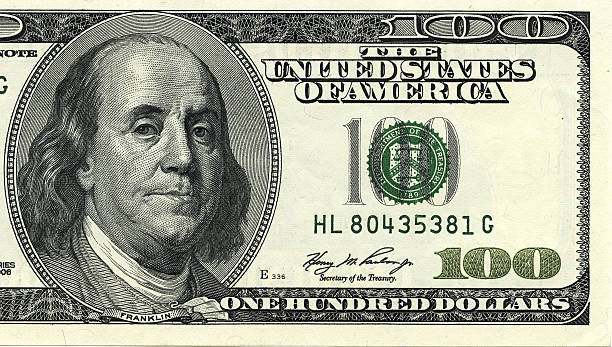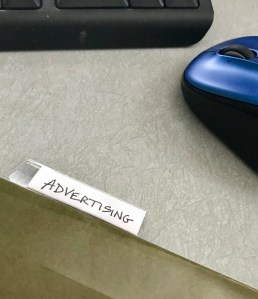Chapter 7 – Speak to Your Tribe
“Ads that change hearts and minds say, ‘This belief is why we wake up in the morning. It’s why we come together. Here’s how we live out our belief. Do you believe what we believe?’” – Roy H. Williams
You kept your promise. You took a break from thinking about advertising all through dinner. To do so, however, you found you had to focus all your energy on your spouse. You asked questions, listened closely, smiled a lot. As hard as it was, you steered the conversation away from yourself at every chance.
Isn’t that everyone’s favorite subject? Themselves? You know you could drone on for hours given the opportunity. Tonight you were hoping your spouse wouldn’t ask because you knew you had more to say than a pot roast and mashed redskins could handle.
After dinner you go open your laptop. There was a thread you saw online earlier in the day with some guy who was called The Wizard of Ads. You promised yourself you would look him up when you had more time.
Roy H. Williams in Austin, Texas got the name The Wizard of Ads from one of his clients and used that name as the title of his trilogy of best-selling business books. You find the quote that brings your earlier question about emotions to nest.
“The risk of insult is the price of clarity.” -Roy H. Williams, The Wizard of Ads, Chapter 1.
You read that to mean the more clear you are with your message, the more likely some people will have strong feelings towards it and others will have strong feelings against it. No one had left the Audi ad off their list. It was either top five or bottom five. That’s clarity.
Even the election, you realize, was more about appealing to one set of people, even if it angered everyone else. Both sides were using emotion to rile up their tribes. They were using Anger and Fear to reach the hearts of people who thought like they did, believed as they believed.
You ponder this further. Using emotion reaches the hearts of people. The people most likely to be persuaded by your emotional pitch, however, are those who already have something in common with you. Everyone else will be insulted. Ignore those folks and focus on those who share your values, who share your beliefs.
That’s the word you wanted. Beliefs! People who believe the same things you do will always be your most loyal customers. You already know that. When you use emotions in advertising, you figure you should use emotions that also align with your company values in the first place. You’re really speaking your beliefs. Those who share your beliefs will perk up and listen.
That, you figure, is why some of the emotional ads did nothing for you. They were speaking to a different belief than yours, a different value.
You start rethinking your earlier thought about speaking to the heart. Love and Joy and Hope are still powerful emotions that reach the heart. But you have to figure out which hearts to reach with those emotions. You want to reach the people who share your belief system, who share your core values.
You start thumbing through a file you keep of all the workshops you’ve attended. You remember one you went to years ago that had an exercise to help you uncover your own core values. You find the yellow sheets stapled together.
 There on page 2 you had circled the words Freedom, Curiosity, Diligence, and Education. Those are your Core Values, your personal traits. That is what drives you to do what you do. It is also what drives your business. Your business shares those traits with you.
There on page 2 you had circled the words Freedom, Curiosity, Diligence, and Education. Those are your Core Values, your personal traits. That is what drives you to do what you do. It is also what drives your business. Your business shares those traits with you.
Freedom because you’re the business that helps others help themselves and to give them their freedom.
Curiosity because you’re the business that is always looking for a better, newer, more advanced way to do what you already do well.
Diligence because you won’t stop until a problem is solved and solved the right way. Your staff sometimes calls it tenacity, because they know once you set your mind to something, you see that it gets done.
Education because you’re always learning and you’re always teaching. Your business hosts more how-to classes than all your competitors combined, yet you, yourself spend more time attending classes and workshops than any other entrepreneur you know. There is always something new to be learned.
Your tribe, your most fiercely loyal customers, share those traits. You have to speak to their hearts using emotions, but you have to also do it in their language of Freedom, Curiosity, Diligence and Education.
Like Roy said, when you do that with clarity you may insult someone else, but your tribe will respond. You add this to your list.
Principle #5: Speak to Your Tribe
Something in the back of your mind clicks. You remember a TEDx talk by Simon Sinek you and few million of your friends saw on YouTube. You pull it up online and start watching. There! At the 5:36 mark is exactly what you are looking for.
“The goal is not to do business with everybody who needs what you have. The goal is to do business with people who believe what you believe.” (Simon Sinek, Start With Why, TEDx Puget Sound)
Your tribe is people who believe what you believe. Your tribe is people who share your values. Your tribe is people most likely to be moved positively by your emotional appeal.
Like all the other principles, you look at this principle as one that fits in well with the others. Make only one point, but make it one that tells a story of Love or Joy or Hope about Freedom, Curiosity, or Diligence.
Do that and you’ll have the winning formula for ads that move the needle and get results.
At the end of the day, you realize, the true goal of your advertising is to get people to think of you first when they need your product or service. The people who already think like you do, who share your beliefs and values, are the low-hanging fruit out there waiting for you to speak to them.
Your list is growing.
- Most Ads Suck
- The Message Is More Important Than the Media
- Don’t Look or Sound Like an Ad
- Make Only One Point
- Tell a Story
- Speak to the Heart
- Speak to Your Tribe
-Phil Wrzesinski
www.PhilsForum.com
PS Up next … Chapter 8 – Make Your Customer the Star
Foreword
Chapter 1 – Most Ads Suck
Chapter 2 – It’s the Message, Not the Media
Chapter 3 – Don’t Look or Sound Like an Ad
Chapter 4 – Make Only One Point
Chapter 5 – Tell a Story
Chapter 6 – Speak to the Heart


 That is basically the heart of the new advertising campaign by Nike that features Colin Kaepernick with the slogan …
That is basically the heart of the new advertising campaign by Nike that features Colin Kaepernick with the slogan … We rolled this out to three different communities. Two of the communities chose Marketing & Advertising, one chose Selling & Customer Service. All three are reporting back with incredibly positive feedback. Other communities are already bugging MSOC to be included in the next round.
We rolled this out to three different communities. Two of the communities chose Marketing & Advertising, one chose Selling & Customer Service. All three are reporting back with incredibly positive feedback. Other communities are already bugging MSOC to be included in the next round.


 The big chains get them daily by the hundreds. If I told you those soulless corporations didn’t care, you’d believe me. They do care, but not nearly as much as you do when someone writes something bad about you.
The big chains get them daily by the hundreds. If I told you those soulless corporations didn’t care, you’d believe me. They do care, but not nearly as much as you do when someone writes something bad about you.

 I spent $200/board for three chalkboards on the outside of our building where customers could write their own answers to the questions posed on each board.
I spent $200/board for three chalkboards on the outside of our building where customers could write their own answers to the questions posed on each board. I spent another few hundred dollars to create the mileage signpost outside our store.
I spent another few hundred dollars to create the mileage signpost outside our store.
